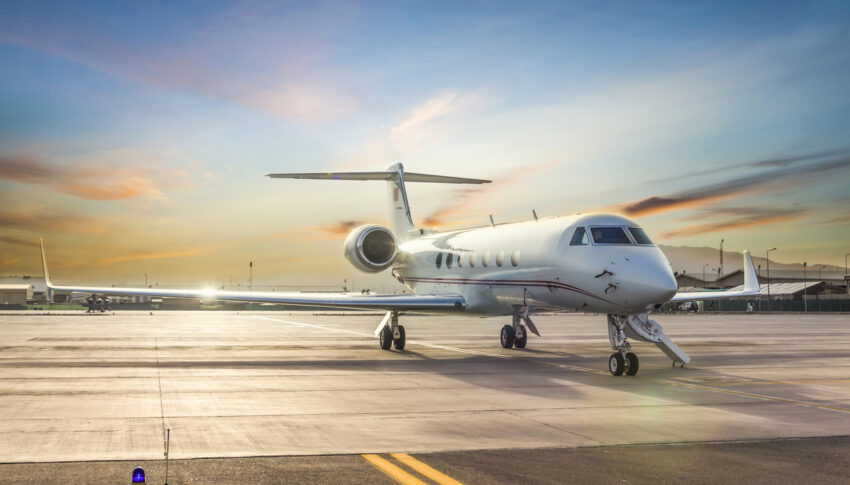What does business aviation look like in 2022? Join us in our forward-looking horizon scan with executives from across the industry for one of the most important years in aviation.
Business aviation is seeing a continuation of the massive demand spikes during the COVID-19 pandemic as organisations — and individuals — seek to lower the inherent infection risk from travelling. But along with the opportunities and rewards, this brings challenges to the industry.
“Right now, the biggest challenge is supply of aircraft,” Richard Koe, managing director of data research and consultancy outfit WINGX, tells us. “The industry is still immature, fragmented and complex, which constrains its scalability. Aircraft utilisation is very low compared with commercial, but still near the limits given the heterogenous mix of fleets available.”
This mix comprises the many aircraft managed on behalf of owners, and thus not 100% available to the charter market, as well as the compounding factors of low available inventory and years-long manufacturer pipelines. At the same time, business aviation demand has seen substantial spikes exceeding market supply.
Koe suggests that the evolution of the SARS-CoV-2 virus will keep this demand high, warning that “the supply side may not be able to deliver. Disappointed newcomers to the market may be encouraged to migrate back to the commercial airlines as they recover. To mitigate this, the busiest operators will need to buy fleets, and charter brokers will need to negotiate robust and innovative ways to secure lift from lots of smaller operators.”
The growth in business aviation — and its expansion into new markets within organisations and outside them — has been especially marked in the UK, where the main player in intra- and inter-regional commercial aviation, Flybe, collapsed in March 2020.
Marc Bailey, chief executive of BBGA, the British Business and General Aviation Association, tells us that “business aviation continues to connect city pairs that the airlines no longer cover.”
As a result, says Bailey, “the increased level of business aviation flying, especially newcomers to charter, has greatly benefitted our aviation services and independent MRO and technology industry members as these aircraft need support on the ground too, giving rise to new technology innovations and a host of apps used by private aviation terminals [FBOs], MROs and charter brokers.”
BBGA has also been working with the UK government to develop, shape and back the Aviation Skills Retention Platformto ensure a skilled workforce for the future. The platform was launched by the UK’s aviation minister at BBGA’s 2021 conference.
The resilience of the sector — and of the people who make it up — has been particularly noteworthy, Alex Durant, chief executive officer of SaxonAir and BBGA deputy chair, tells us. “Few sectors have had to deal with such massive income drops whilst having to maintain high overheads. Many have also had to continue operating throughout the evolution of the pandemic, while becoming leaner, evolving into more efficient operations at the same time. The ability of aviation professionals to manage skills fade — whilst facing job insecurity — has also been evident, proven by the way erratic but rapid increases in demand has been met by all parts of the aviation infrastructure.”
In many ways, the pandemic effect in 2021 has transformed the perception of business aviation, both among users and in the wider aviation industry. The less glamorous, less luxurious side of business aviation — connecting passengers with destinations when other options are much less easily available — is in its ascendency.
At the end of the day, London Oxford Airport head of business development James Dillon-Godfray tells us, “business aviation will maintain its growth levels from pre-pandemic numbers with the considerable number of new users now converted into the benefits of private travel and the inherent health benefits and peace of mind when not having to use crowded airports — despite the higher cost of private air travel.”
But risks remain, Dassault Aviation’s executive vice president for civil aircraft Carlos Brana tells us, and they are “mostly exogenous to the industry itself. What’s going to happen with COVID or some new virus? What about trade wars or financial sanctions or market crashes? A lot of crazy things can happen that impact business aviation—at least temporarily.”
“If business aviation has one thing going for it,” Brana says, “it’s the preferred way to travel in the midst of a crisis. In fact, it’s the preferred way at any time. A year or two ago, pundits might have said Zoom and Skype were threats to business aviation. But we have heard that sentiment for years.”
2022 will also be a pivotal year for new technologies. Business and private aviation are likely to be at the forefront of new kinds of flying vehicle, with names like Archer, Eve, Joby, Lilium, Vertical Aerospace and Zanite all making organisational, funding and technological progress. Within the decade, these vehicles are likely to be competing with the business aviation aircraft of today.
Author: John Walton
Published 16th June 2022




